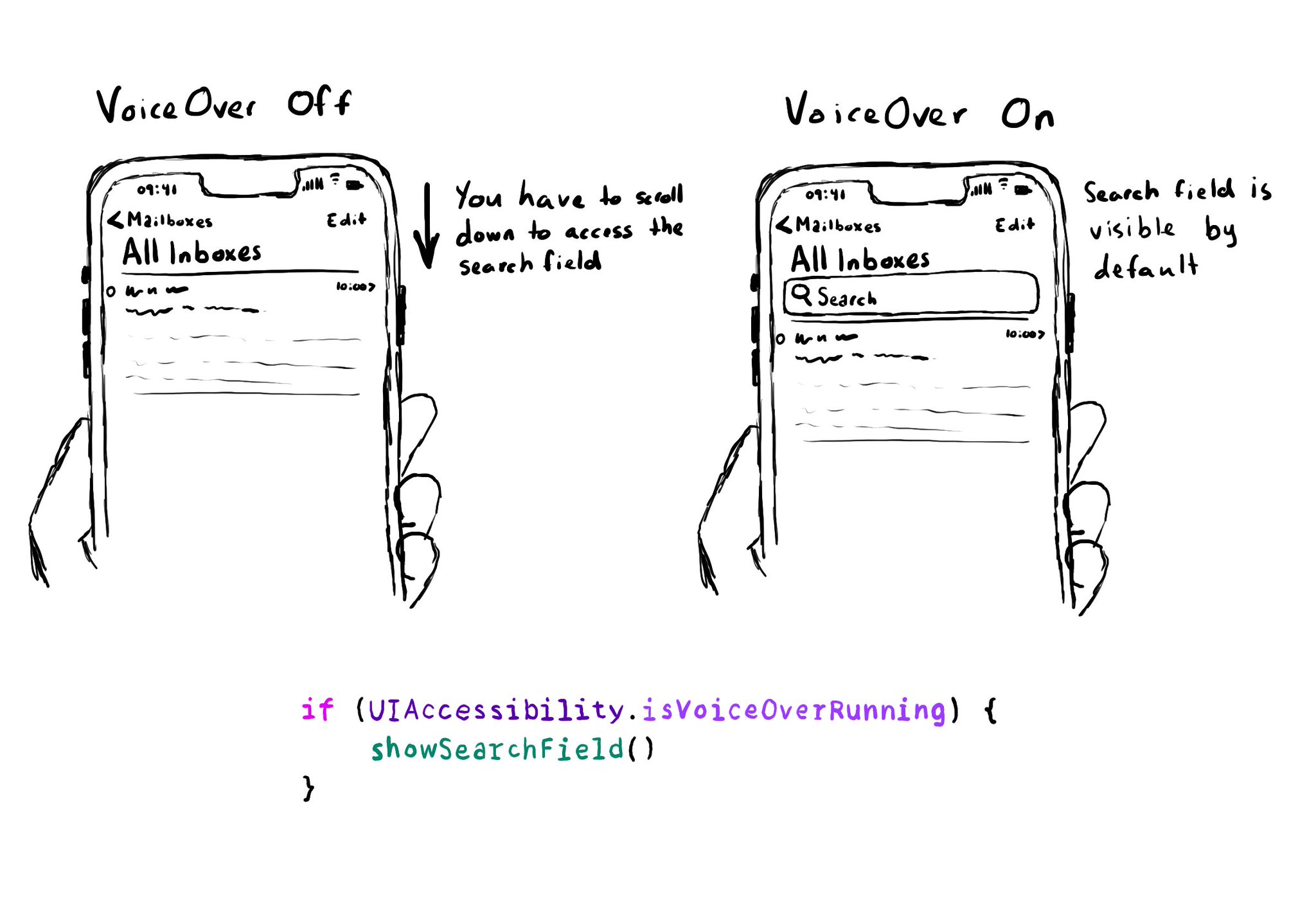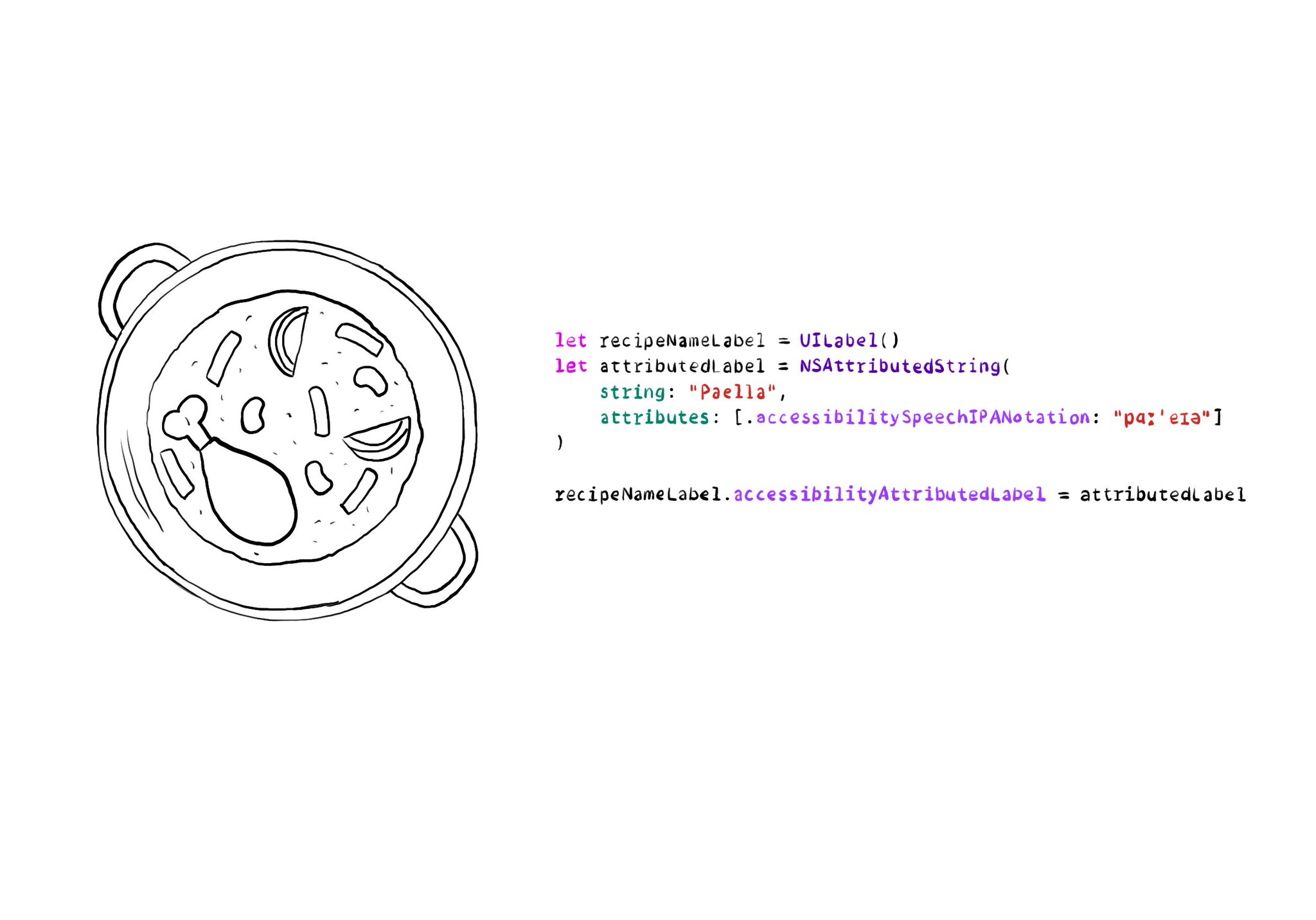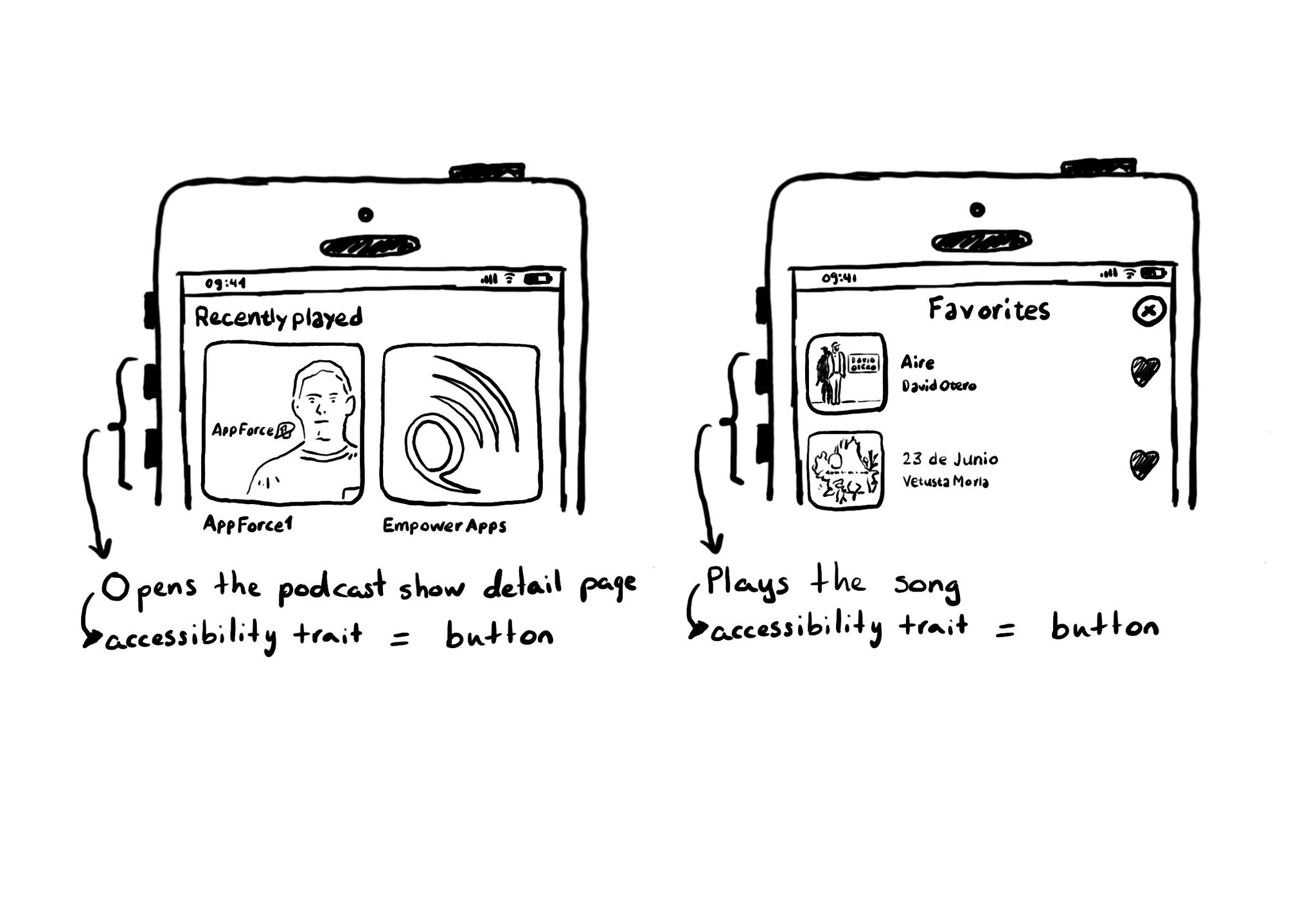You can check if some features, like VoiceOver, are on. Experiences should not diverge too much. It could be used to avoid auto-hiding UI elements. iOS probably checks this to show search fields by default, without having to pull them down.

From the documentation:
isVoiceOverRunning: https://developer.apple.com/documentation/uikit/uiaccessibility/isvoiceoverrunning
You may also find interesting...

accessibilitySpeechIPANotation is useful for indicating how foreign words are pronounced. It really annoys me to hear the word paella constantly mispronounced 😁. You could also specify language, but this way, VoiceOver won't change its voice. Example code in the image: ```swift let recipeNameLabel = UILabel() let attributedLabel = NSAttributedString( string: "Paella", attributes: [.accessibilitySpeechIPANotation: "pɑːˈeɪə"] ) recipeNameLabel.accessibilityAttributedLabel = attributedLabel ```

A common example where you need to manually configure the button accessibility trait is for some table/collection view cells. These tend to be “buttons” that perform an action, like playing music, or bring the user to a different screen.
If you want to keep yourself up to date with what’s going on, or what has been published lately, on how to develop more accessible mobile apps, make sure you subscribe to Accessible Mobile Apps Weekly by @RobinKanatzar from @accessible_apps.